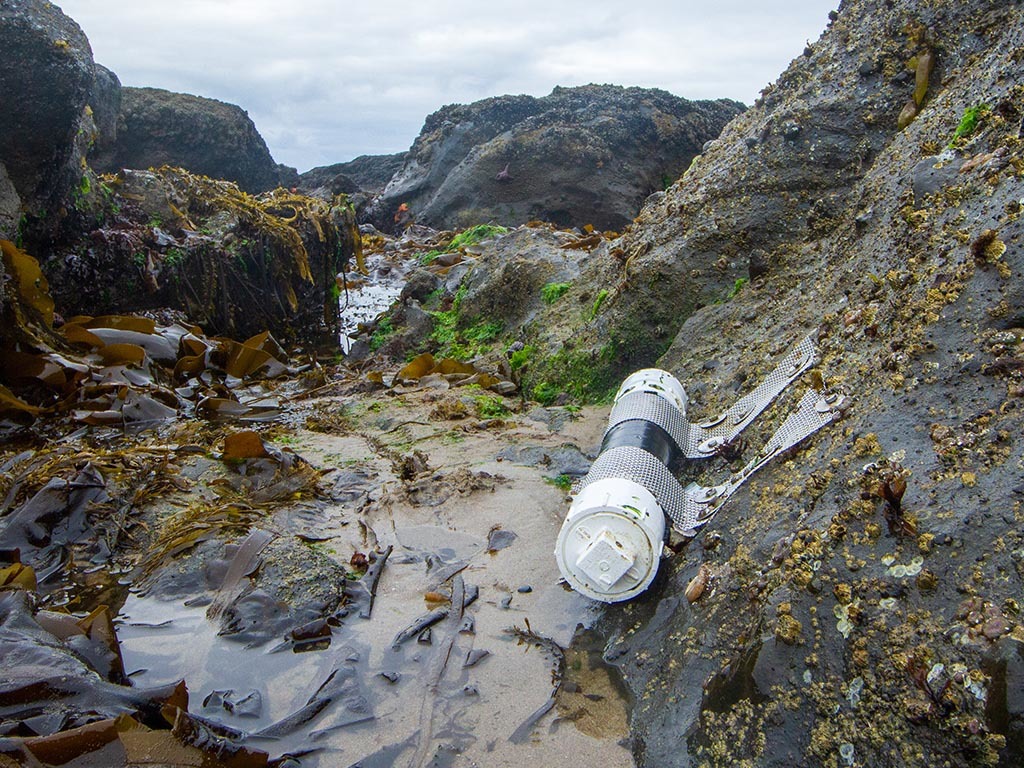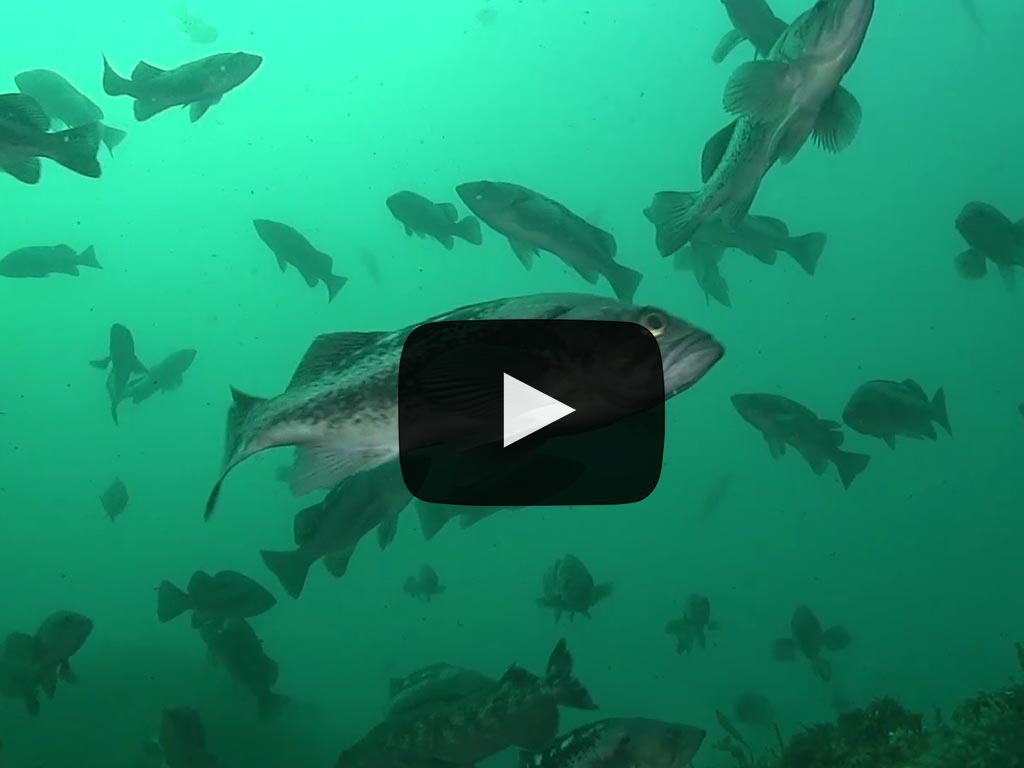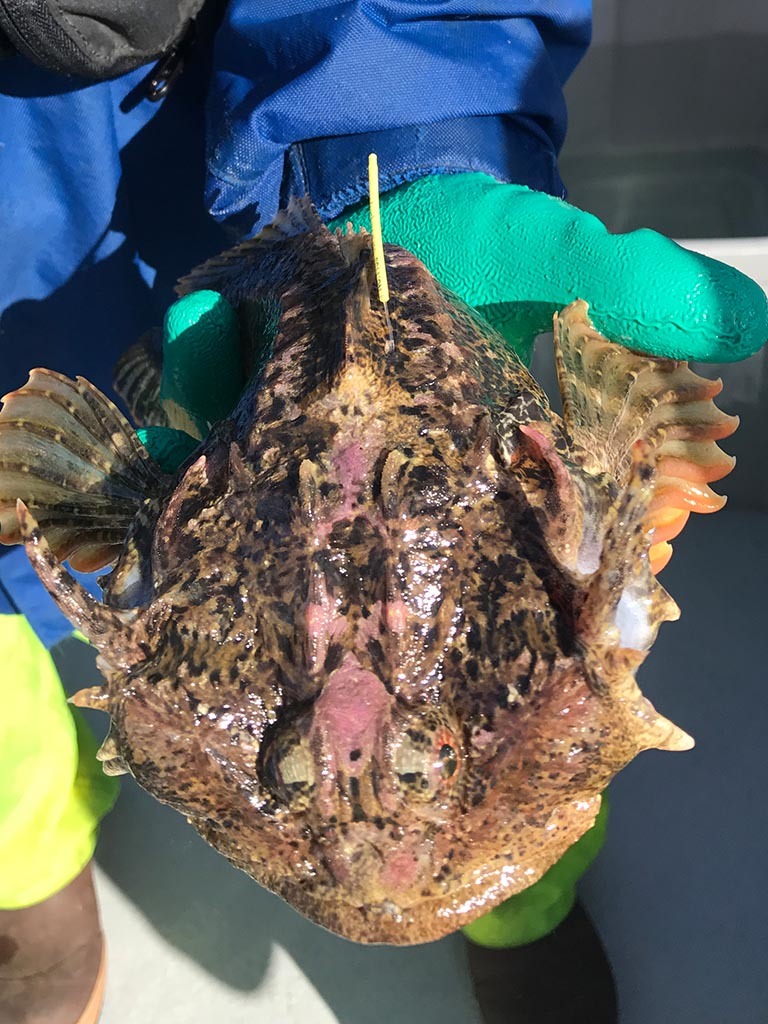 Click the video above to see the ocean sunfish spotted off of Otter Rock Marine Reserve.
Late last week, ODFW Marine Reserves Program researchers spotted several ocean sunfish, or mola mola, in Otter Rock and Cape Falcon Marine Reserves. There were also other reports of additional sunfish off of the central Oregon Coast.
Ocean sunfish are a strange looking fish with a truncated tail and bullet shaped body. They often feed near the surface and get mistaken for sharks when their large dorsal fin emerges from the water (like in this video). They are found in temperate and tropical oceans worldwide and are spotted occasionally along the Oregon Coast.
The day this sunfish was spotted in Otter Rock Marine Reserve, surface water temperatures were on the warmer side, which may explain why sunfish were showing up. Surface water temperatures usually hover around 50 degrees, during our SCUBA surveys divers reported temperatures of 63 degrees (at 30 feet depth). The sunfish may be riding the warmer water currents that were coming closure to shore right now.
Sunfish are the largest bony fish and can get up to 11 feet long. They are harmless to people and their preferred meal of choice is jellyfish and zooplankton, and occasionally small fish. They tend to be curious and often approach divers and nearby boats.
Ocean Acidification and Hypoxia Action Plan Released
 An ocean acidification sensor installed at Cascade Head Marine Reserve is part of an ongoing collaborative research project led by Oregon State University.
Oregon has a new roadmap for addressing rising ocean acidification and hypoxia – two climate change-induced conditions that could have widespread consequences for the state’s ocean ecosystem and the economy. The Oregon Ocean Acidification and Hypoxia Action Plan outlines actions the state will take to understand, adapt to and mitigate these impacts.
Ocean acidification and hypoxia are significant threats to a wide range of marine animals, from crabs to fish to oysters, with potentially major impacts on the ecosystem and the state’s economy, including tourism and the seafood industry.
Researchers and managers are interested in understanding if marine reserves provide resiliency and if they are able to withstand the potential effects of acidification, relative to other areas. To address this potential, Oregon’s Marine Reserves serve as reference areas by acting as ‘scientific controls’ in a changing environment. This is one of the reasons our research partners want to work with us at these sites (find more info on our research partners). One current project is making oceanographic measurements (including pH) inside marine reserves so we know more about how these sites are experiencing changing ocean conditions. Read more about this project here.
For questions on the Action Plan, please contact: Dr. Caren Braby, Caren.E.Braby@state.or.us, 1-541-961-5352
Underwater Videos Available for Download
 Follow along and take a look at our videos on Flickr. From rockfish to Dungess crab, to a skate and wolf eel, dive beneath surface of the ocean and take a look at some of our underwater research footage. Plus, you can also download it directly from the site.
 This buffalo sculpin was tagged, then released, at Cape Falcon Marine Reserve. By tagging fish in the marine reserves we are learning about fish movement, growth, and post-release survival. ODFW is currently tagging fish at Redfish Rocks and Cape Falcon. We will be tagging fish at Cascade Head and Cape Perpetua next year. Read more about tagged fish in this story.
 |
|
We completed 4 days of hook and line/longline surveys at Redfish Rocks aboard the F/V Top Gun. We also finished one day of hook and line surveys at Cape Falcon. |
 |
|
Two days of SCUBA dive surveys were conducted at Redfish Rocks. |
Updates from Collaborators
 |
|
Juvenile fish samples were collected at both Redfish Rocks and Otter Rock during SMURF surveys, led by Oregon State University. These surveys will be wrapping up for the year in mid-September. |
Explore More Marine Reserves News
|